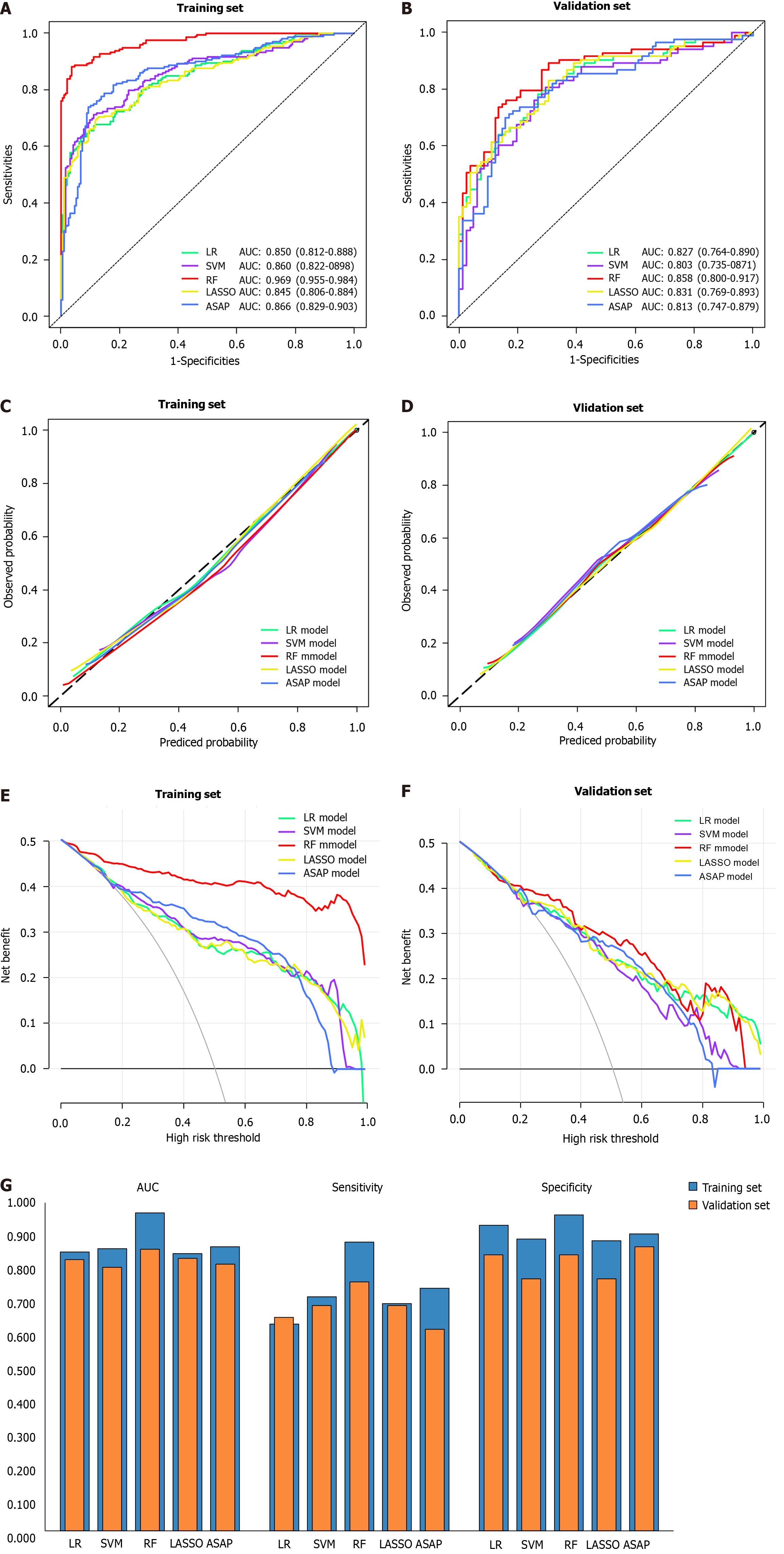Copyright
©The Author(s) 2024.
World J Gastrointest Oncol. Sep 15, 2024; 16(9): 3839-3850
Published online Sep 15, 2024. doi: 10.4251/wjgo.v16.i9.3839
Published online Sep 15, 2024. doi: 10.4251/wjgo.v16.i9.3839
Figure 3 Construction and evaluation of prediction models for hepatocellular carcinoma.
A: The receiver operating characteristic (ROC) curve of the training set; B: The ROC curve of the validation set; C: The calibration curve of the training set; D: The calibration curve of the validation set; E: The decision curve analysis (DCA) curve of the training set; F: The DCA curve of the validation set; G: Comparison of area under the curve, sensitivity, and specificity between the models on both training and validation sets. The black diagonal line in the calibration curves represents the optimal prediction value, while the X-axis and Y-axis of DCA curves respectively represent the threshold probability and net benefit. LR: Logistic regression; SVM: Support vector machine; RF: Random forest; LASSO: Least absolute shrinkage and selection operator; AUC: Area under the curve.
- Citation: Wang YY, Yang WX, Du QJ, Liu ZH, Lu MH, You CG. Construction and evaluation of a liver cancer risk prediction model based on machine learning. World J Gastrointest Oncol 2024; 16(9): 3839-3850
- URL: https://www.wjgnet.com/1948-5204/full/v16/i9/3839.htm
- DOI: https://dx.doi.org/10.4251/wjgo.v16.i9.3839









